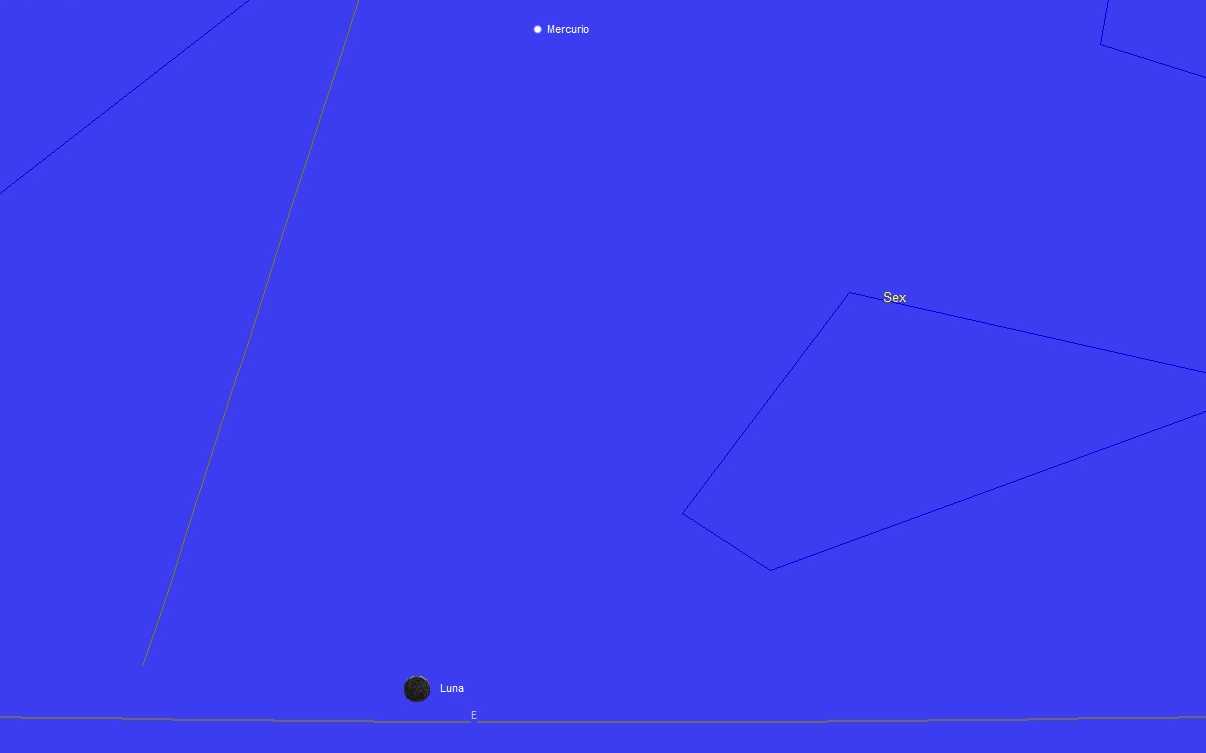MOON LIKE A BRIDGE
To many it will be happened to observe, expecially in the southern regions, the particular phenomena in which the Moon,a little before the sunset, after the new Moon, has a characteristic shape of a small boat, with the cuspids turned towards the high one nearly to equal height. Much less observed the mutual phenomenon in which the our satellite before its rising appears with the cuspids towards the bottom that touching the horizon form an onlooker little bridge. If the illuminated part is under that dark one it speaks therefore about "Moon like a boat", while if the illuminated part is over it speaks about "Moon like a bridge". After the rising the height of the Moon increases, the scythe is straightened until to being perfectly vertical when the Moon passes in meridian. A lot interesting to photograp is obviously the moon "seated", when floating in the air seems to slip on our horizon. In March and still better in April, we will be able to begin to observe it; the Moon in the first days after the conjunction with the Sun will be lowland on the horizon with the characteristic position like a small boat. Since the phenomena is strongly dependent as from the latitude of the observer as from the ecliptical longitude of the Moon, will be well to begin in this spring to take to learn to see this event, initially unsatisfactory then more and more obvious inasmuch as the lunar ascending node will be to 270░ in February 2011. Obviously all it has a precise astronomical explanation that are taken advantage of the trigonometry laws and celestial mechanics that regulate the complicated lunar motion. The variable that determines if and when we can observe the small boat is the parameter ZABL, zenithal angle of bright limb, that is the angle of position of the means point of the illuminated lunar border, calculated not regarding the lunar north but regarding the zenith of the observer. Since the illuminated face of the Moon is always revolted towards the Sun, this angle allows us therefore to know the position of the scythe regarding the horizon, expecially when the Sun is set down. If such angle is close to 180░ the lunar scythe it assumes the shape to a little boat. Obviously it is not necessary that the precise value is caught up, we say that in range of approximately ▒5░ is however an optimal vision of the phenomenon. Necessary condition is that the phase is smaller of 50%, in how much the more is small and more the cuspids are sharp, and that the Sun is sufficiently distant to allow to see the Moon to the twilight.


ANCONA GG MM AAAA HH MM ZABL K ALT ALT.S. AOSTA GG MM AAAA HH MM ZABL K ALT ALT.S. BARI GG MM AAAA HH MM ZABL K ALT ALT.S. BOLOGNA GG MM AAAA HH MM ZABL K ALT ALT.S. CAGLIARI GG MM AAAA HH MM ZABL K ALT ALT.S. CAMPOBASSO GG MM AAAA HH MM ZABL K ALT ALT.S. CATANZARO GG MM AAAA HH MM ZABL K ALT ALT.S. FIRENZE GG MM AAAA HH MM ZABL K ALT ALT.S. GENOVA GG MM AAAA HH MM ZABL K ALT ALT.S. L AQUILA GG MM AAAA HH MM ZABL K ALT ALT.S. MILANO GG MM AAAA HH MM ZABL K ALT ALT.S. NAPOLI GG MM AAAA HH MM ZABL K ALT ALT.S. PALERMO GG MM AAAA HH MM ZABL K ALT ALT.S. PERUGIA GG MM AAAA HH MM ZABL K ALT ALT.S. POTENZA GG MM AAAA HH MM ZABL K ALT ALT.S. ROMA GG MM AAAA HH MM ZABL K ALT ALT.S. TORINO GG MM AAAA HH MM ZABL K ALT ALT.S. TRENTO GG MM AAAA HH MM ZABL K ALT ALT.S. TRIESTE GG MM AAAA HH MM ZABL K ALT ALT.S. VENEZIA GG MM AAAA HH MM ZABL K ALT ALT.S. K = % of illuminated Moon ALT. = height of the Moon above the horizon, in degrees ALT.S. = height of the Sun above the horizon, in degrees
ALL TIMES ARE IN T.D.T.